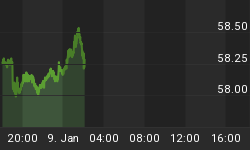Speaking of ill-fated, inflated lift-offs, one is reminded of the dirigible disasters of the 1930s. The explosion of the Hindenburg Zeppelin on May 6, 1937, killing 36 people, is the most infamous disaster, though there were several others. That big dirigible was completely destroyed in less than one minute. Inflated financial markets share the same structural instabilities as the Zeppelins; however, the dirigible accident (also caught on film) that will chill an asset manager the most, involved the USS Akron on May 11, 1932.
No doubt, there are plenty of unhealthy signs monetarily, economically, geopolitically ... actually everything. But, here is the germane question of the moment: Will asset markets first enter a further period of alluring lunacy? Will there be one more massive asset inflation of securities markets ... the last death rattle of an over-indebted, over-inflated financial system? To an extent, this already has happened.
We list 10 reasons -- these being a partial foundation to one such scenario, our current Zeppelin Balloon Theory -- why such an occurrence cannot be entirely discounted.
To read more: please click the following safe link to this month's Global Spin: ![]() Logical Lunacy of Chasing Bubbles
Logical Lunacy of Chasing Bubbles
















